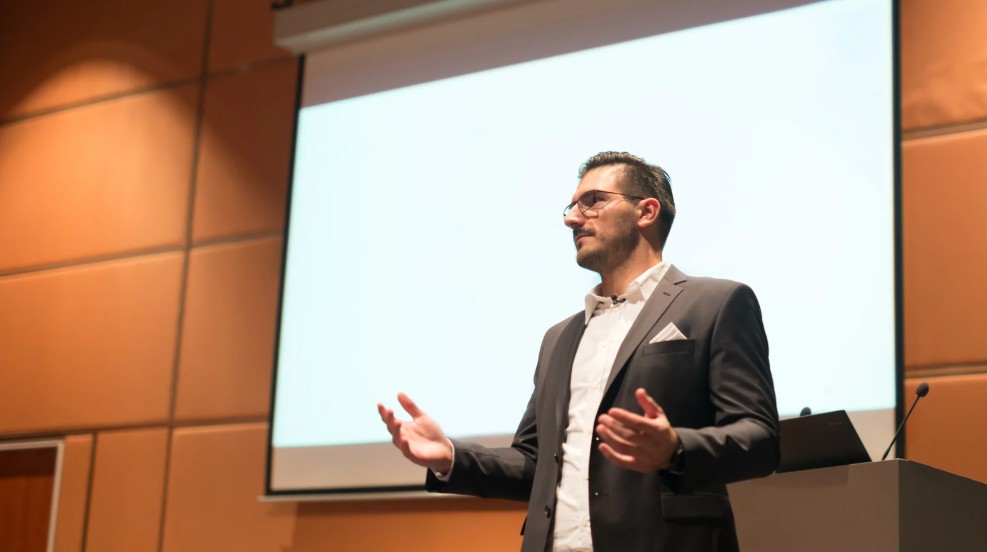Every presentation is an opportunity to make an impression, influence decisions, and share ideas. Whether you’re speaking in a team meeting, pitching to clients, or presenting research, your words need to land with clarity and purpose.
For non-native English speakers, presenting in a second language can bring added pressure, but also offers a chance to shine with preparation and poise. When structure, tone, and pacing work together, even simple messages become powerful.
Presenting isn’t about speaking perfectly, it’s about making your message easy to follow and hard to forget. Read on to explore how to deliver better talks that leave a lasting impression.
How Can You Build Confidence That Connects the Message Every Time You Speak?
Establishing Your Message Before You Begin

A successful talk begins long before the first word is spoken. The message should be clear to you before it becomes clear to your audience. Identify your main idea and build everything around it.
When you understand your goal, it’s easier to choose the right tone, examples, and structure. Start with a strong opening statement that introduces your topic in one sentence.
Then break your content into smaller, focused sections. Clear beginnings and endings help your ideas stay organised and memorable.
Speaking with a Steady Pace
Rushed speech can confuse listeners, especially when the topic is complex or unfamiliar. A calm and steady pace helps your audience understand and keeps your own nerves in check. Pausing briefly between points gives your message space to land.
These pauses also give you time to think and breathe. Practice your speech aloud to find the right rhythm. The goal is to speak naturally, not fast or slow, just controlled. Your tone should sound engaged, but not over-rehearsed.
Supporting Words with Visuals

Visual support adds depth to your message and keeps the audience engaged. Slides, charts, and images should highlight key points, not overload them.
Keep text minimal and readable from a distance. Use visuals to clarify ideas that are harder to explain with words alone. A good slide doesn’t distract, it supports your voice.
Think of each slide as a companion, not the focus. Rehearse your transitions between slides so you stay in sync with the flow of your presentation.
Building Transitions That Hold Attention
When you move between topics, transitions help your audience stay with you. They also give you space to breathe and reset your tone. Simple phrases like “Now let’s take a closer look at…” or “Another important point to consider is…” make the flow feel natural.
These transitions guide listeners and help them follow your logic. Practicing these moments aloud makes them feel more natural during the actual delivery. They’re also useful markers for you as the speaker to stay organised and on track.
Ending with Impact
The final part of your talk leaves the strongest impression. A great ending isn’t long, it’s clear and confident. Freshly restate your main message, then offer a closing remark that reinforces its importance.
Thanking the audience shows appreciation and gives a sense of closure. If a Q&A follows, prepare for it like part of the talk itself. Be ready to respond with clarity, and if you need a moment to think, it’s okay to pause or clarify the question. That shows control, not uncertainty.
Strong communication builds confidence, and that confidence grows with practice. To improve your delivery and fluency, it’s helpful to use practical resources focused on real-world situations.
A great example of this support can be found in the presentation in English, where guided practice helps speakers prepare for real conversations and professional delivery.
Author Profile

- Guest Blogger & Outreach Expert - Interested in Writing Blogs, Articles in Business Niche | News Journalist By Profession in the United Kingdom
Latest entries
 BusinessNovember 21, 2025A Practical Guide to Using LMS Platforms for Better Onboarding
BusinessNovember 21, 2025A Practical Guide to Using LMS Platforms for Better Onboarding EducationNovember 17, 2025Choosing the Right AI Course for Your Child: A Parent’s Guide
EducationNovember 17, 2025Choosing the Right AI Course for Your Child: A Parent’s Guide FinanceSeptember 19, 20257 Paid Advertising Mistakes That Drain Your Marketing Budget
FinanceSeptember 19, 20257 Paid Advertising Mistakes That Drain Your Marketing Budget BusinessAugust 22, 2025How Recycled Polythene Helps Businesses Exceed Sustainability Targets?
BusinessAugust 22, 2025How Recycled Polythene Helps Businesses Exceed Sustainability Targets?





